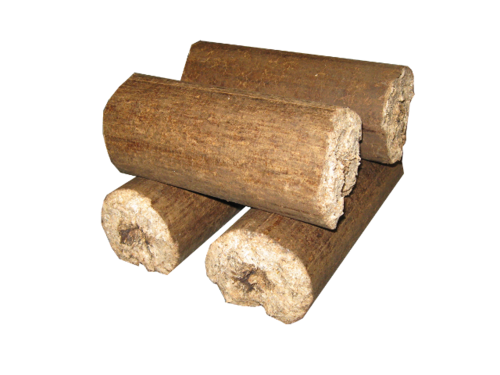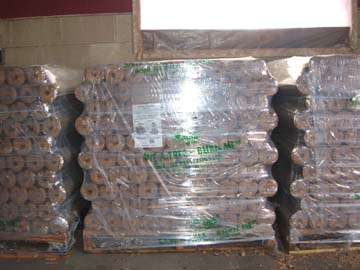
LAST UP TO 12 HOURS WITHOUT SEPARATING
Only firelogs from Home Fire Prest Logs produce heat for up to 12 hours. That is because their patented technology compresses wood waste so densely that the logs will burn red hot throughout producing the most efficient burn available in manufactured firelogs today. The logs stay together without falling apart and have extremely low moisture content of 2%.
COMPRESSED FIRELOGS = LESS VOLUME
Stacking and storing your wood needs to no longer be a problem with the reduced amount of space needed by Home Fire Prest Logs. At 380 logs per pallet equalling one ton, storing your firelogs takes very little room. Store them in a dry location free from any source of moisture.

FIRELOGS ARE SAFE FOR CATALYTIC CONVERTORS

Home Fire Prest Logs are pure wood firelogs without any added substances. They are produced from clean wood which is recycled from the many lumber mills in the British Columbia region. The binding agent in the firelogs is the natural lignin in the wood, which fuse and melt together under the high heat and pressure during log production.

NO POPPING OR CRACKING
Clean wood waste goes into each Home Fire Prest Log, and compressed firelogs do not pop or crack like cord wood in the fire. The popping and cracking of cord wood is produced from small pockets and bubbles of alcohol produced in the wood exploding in the heat of the fire. Compressed firelogs grind up the wood waste into fine particles, which eliminates the alcohol pockets and allows an even quiet burn.
NO FUNGUS, MOLDS, OR BUGS IN FIRELOGS
The extreme heat and pressure the wood undergoes in effect pasteurizes it and eliminates all fungus and molds and bugs from the logs. Stack your Home Fire Prest Logs inside in the basement or in the garage without worry of introducing pests into your home with the wood.


REDUCED CREOSOTE BUILDIP IN FLUE
Creosote is unburned gases condensing on the flue of the chimney. An inefficient burn results in creosote buildup and needs to be addressed when burning wood. Higher efficiency wood stoves have helped solve this problem to a certain degree, but the greatest factor is in the dryness and efficient BTU conversion of your wood. Cleaner burning wood is wood with less moisture, a hotter burn, and less volatile gases released during the burn.

